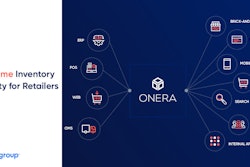
The most important supply chain lesson that shippers and partners have learned over the past couple of years has been the need for resiliency. Those that have been able to anticipate and quickly recover from chain disruptions such as port congestion, rising transportation rates, and capacity constraints thus far are the ones that have benefited financially and strengthened their customer relationships.
According to the technology research firm Gartner, 60% of supply chain executives surveyed admit that their supply chains have not been designed for resilience but for cost-efficiency. But 87% of respondents noted that they plan investments in supply chain resiliency.
The first step in achieving resiliency is investing in cloud computing. Gartner defines cloud computing as “a style of computing in which scalable and elastic IT-enabled capabilities are delivered as a service using internet technologies.”
There are different cloud models including the following:
- Infrastructure-as-a-Service (IaaS) offers essential compute, storage, and networking resources on demand, on a pay-as-you-go basis according to Microsoft. Customers do not have to purchase physical servers and datacenter infrastructure when using this cloud model.
- Platform-as-a-Service (PaaS) is where a third-party provider delivers hardware and software tools to users over the internet. Similar to IaaS, it includes servers, storage, and networking. But it also includes middleware, development tools, business intelligence (BI) services, database management systems, and more. PaaS is designed to support the complete web application lifecycle: building, testing, deploying, managing, and updating.
- Software-as-a-Service (SaaS) uses the web to deliver applications that are managed by a third-party vendor and whose interface is accessed on the clients’ side. Most SaaS applications can be run directly from a web browser without any downloads or installations required, although some require plugins.
Cloud benefits
Cloud computing is accelerating advancements in supply chain technology and fueling the flywheel by enabling startups and incumbents alike to move quickly. All ships rise with the tide but those who fail to invest remain firmly moored to the pier and risk sinking. Cloud computing has reduced the expense of experimentation and thus, transformation.
There are different types of cloud computing, including the following:
- Private clouds – are where users can access a large pool of computing power over the internet.
- Public clouds – allows organizations to benefit from some of the advantages of public clouds but without the concerns about giving up control over data and services because it is away behind the corporate firewall.
- Hybrid clouds – are those in which some data is in a public cloud, and some projects are in a private cloud.
Investments in cloud computing accelerated in 2020 and 2021 as businesses increased their spending on digital transformation plans during the pandemic. The lockdowns throughout the pandemic showed companies how important it was to be able to access their computing infrastructure, applications, and data from wherever their staff was working and not just from an office.
As the pandemic eases, Gartner expects that as much as half of spending across application software, infrastructure software, business process services, and system infrastructure markets will have shifted to the Cloud by 2025, up from 41% in 2022. In addition, it estimates that almost two-thirds of spending on application software will be via cloud computing, up from 57.7% in 2022.
AI + cloud
In addition, artificial intelligence (AI) investments are rising. AI plays a significant role in resilience. Combined with cloud computing, AI helps businesses of all sizes manage their data, identify patterns and insights in information, deliver customer experiences, and optimize workflows.
Utilizing a combined AI and cloud system allows for more accurate inventory management by analyzing and interpreting data in real-time. The combination also helps spot industry trends early, incorporating chatbots, AI-powered customer service agents, which enables around-the-clock availability. According to industry estimates, chatbots can help businesses save on customer service costs by speeding up response times and answering up to 80% of routine questions.
Through an AI and cloud combination, consulting firm Deloitte notes that the Cloud is democratizing the access to AI by allowing businesses access to such services without having to make large investments in additional technical talent or in huge data sets.
Resiliency
Building resilient supply chains have been written about and discussed for many years. Perhaps one of the best-known articles was written in 2005 by Yossi Sheffi, Director of MIT Center for Transportation & Logistics for the Harvard Business Review - Building a Resilient Supply Chain. In the article, Professor Sheffi describes three key areas in how companies can achieve resilient supply chains - increasing redundancy, building flexibility, and changing corporate culture.
“The rewards for building a resilient organization are substantial. The “hardened” enterprise will be able to not only withstand all manner of disruption but also increase its competitiveness. Unforeseen disruptions can create shortages that are not dissimilar to the demand spikes caused by supply/demand imbalances; resilient enterprises can thus react to changing market demand ahead of their competitors,” writes Sheffi.
In 2005, it was costly and time-consuming to build resilient supply chains. However, today, thanks to technological advancements in cloud computing, artificial intelligence, and other technologies, supply chains have no excuse but to invest to avoid future disruptions.















